My research focuses on the physics and dynamics of planetary climate, and the interactions surface-atmosphere.
PLUTO
In July 2015, NASA's New Horizons spacecraft flew by Pluto and revealed an active frozen world, with unprecedented landscapes in the Solar System. It features vast plains covered with frost and amazing glaciers, composed of ices of nitrogen, methane, and carbon monoxide, lying below a spectacular atmosphere filled with bluish organic hazes.
In order to understand the mechanisms that led to these exotic and sometimes enigmatic observations, I have developed numerical models to simulate Pluto's atmosphere and surface on different timescales. These tools have turned out to be remarkably efficient to explain many aspects of Pluto.
The volatile ice cycles on Pluto
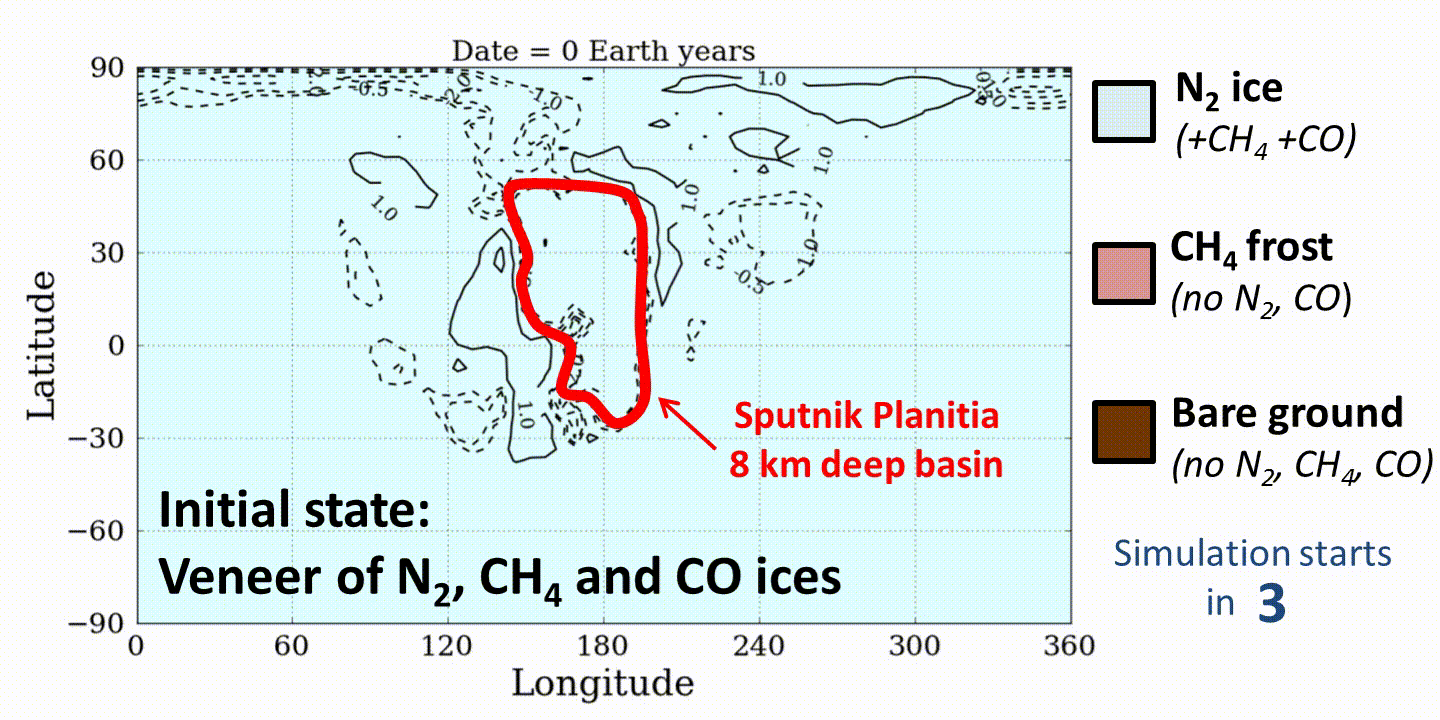
Animated surface map showing N2-CH4-CO mixture, pure methane, and bare ground. Starting with all ices uniformly distributed, N2 ice fills the Sputnik Planitia basin, along with CO. The sub-latitude shown is the sub-solar point and the central longitude is the anti-Charon point (Sputnik Planitia).
Credits: T. Bertrand
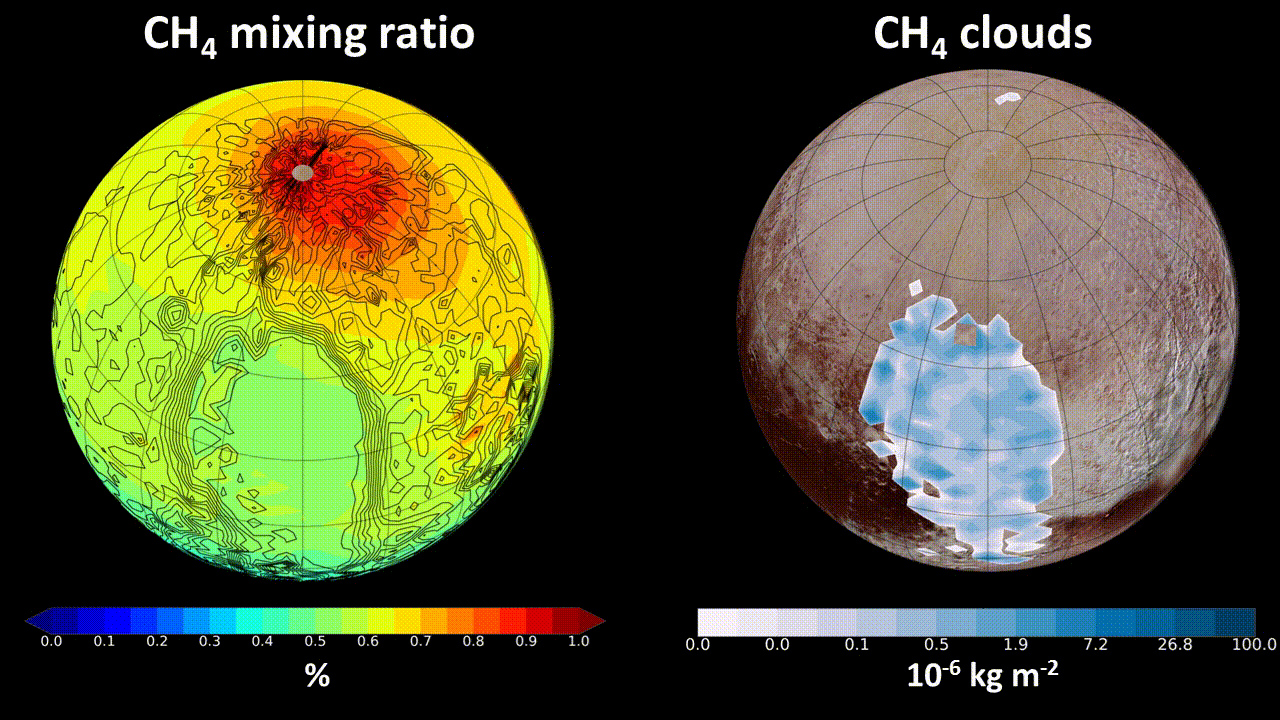
Atmospheric CH4 mixing ratio and CH4 clouds as simulated with the Pluto Global Climate Model. Note that CH4 clouds on Pluto form in the first km above N2-covered surface, during daytime when N2 ice sublimes and feeds the atmosphere with cold air.
Credits: T. Bertrand
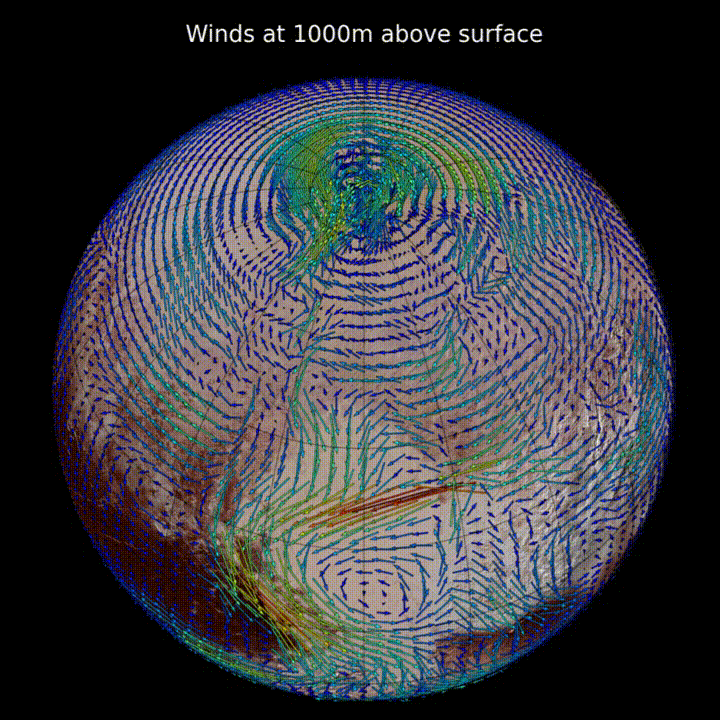
Horizontal winds at 1000 m above local surface, in 2015, as simulated with the Pluto Global Climate Model.
Credits: T. Bertrand
MARS
I have worked on the climate of Mars, studying the dust transport in the Martian atmopshere, at global, meso and micro scales, and the seasonal and spatial variabily of the planetary boundary layer (PBL). I performed EDL (Entry Descent and Landing) studies for ExoMars and InSight missions. Now, I am modeling dust storms to understand and forecast the formation of Global Dust Storms.
What are the origins of observed detached layers of dust on Mars? Investigating with a global climate model
Recently, observations of the vertical dust distribution of the Martian atmosphere by the Mars Climate Sounder on board the Mars Reconnaissance Orbiter revealed a phenomenon which is still poorly understood: the formation of detached layers of dust. These detached layers, also confirmed by the Thermal Emission Spectrometer on-board the Mars Global Surveyor, reside above the planetary boundary layer up to 65km and have been mostly observed at low latitudes.
Different atmospheric processes can be combined to explain this phenomena, such as small-scale lifting, slope winds, scavenging by water ice clouds, or dust storms.
We used the Global Climate Model (GCM) developed at the Laboratoire de Meteorologie Dynamique (LMD) to simulate the formation of detached layers of dust and contribute to better understand their formation and their spatial and temporal variability.
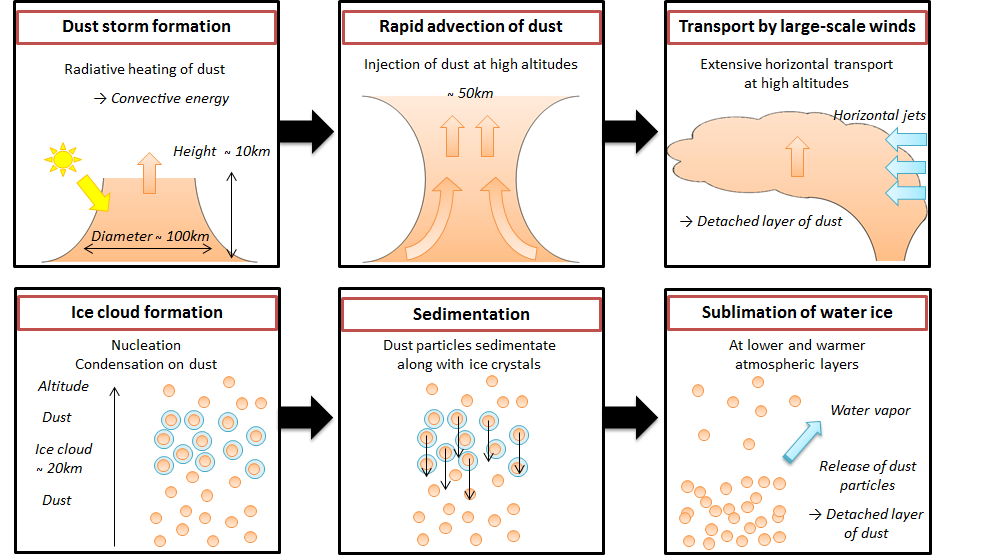
Two processes thought to lead to detached layers of dust at high altitudes in the Martian atmosphere. Top: Injection of dust by rocket dust storms. Bottom: Scavenging of dust by water ice clouds.
Credits: T. Bertrand
The MARs Boundary Layer Lidar (MARBLL)
The MARBLL instrument is the first Martian LIDAR concept providing simultaneous wind speed and aerosol density measurements. Its design, validated with a prototype, relies on a Mach-Zehnder interferometer as well as on the laser inherited from the ChemCam instrument on-board Curiosity. Whereas the aerosol density profile is classically determined by measuring the amount of backscattered light along the line of sight (LOS), the wind speed measurement uses the Doppler shift created by the velocity of the particles along this LOS.
In order to predict the atmospheric turbulence encountered by MARBLL and simulate its performance on Mars, we employed the LMD Martian Large Eddy Simulation model (LES).
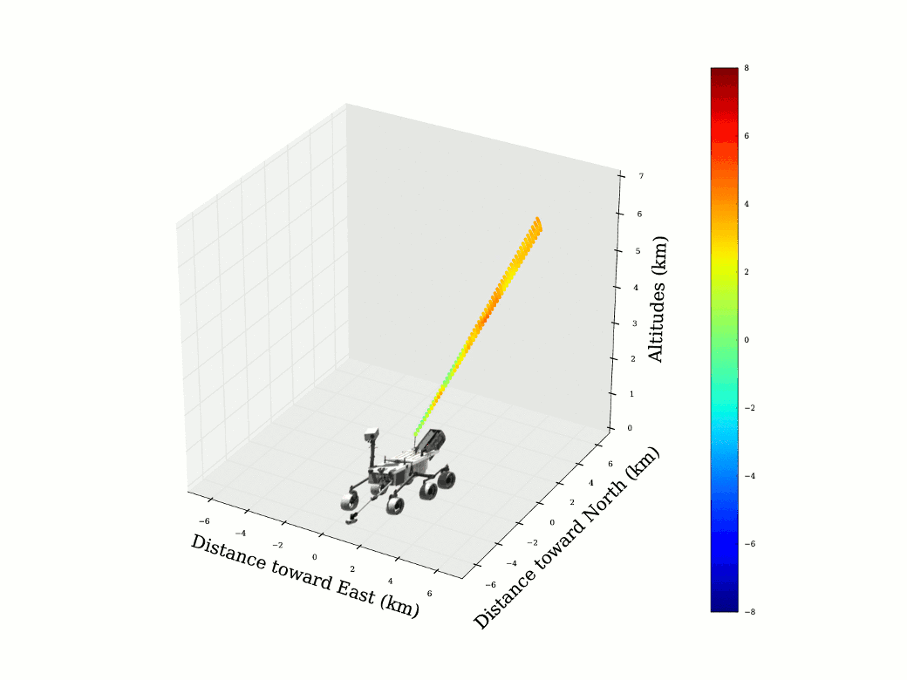
Simulation of several shots at 45 degree elevation in all directions
Credits: T. Bertrand
PLUTO
In July 2015, NASA's New Horizons spacecraft flew by Pluto and revealed an active frozen world, with unprecedented landscapes in the Solar System. It features vast plains covered with frost and amazing glaciers, composed of ices of nitrogen, methane, and carbon monoxide, lying below a spectacular atmosphere filled with bluish organic hazes.
In order to understand the mechanisms that led to these exotic and sometimes enigmatic observations, I have developed numerical models to simulate Pluto's atmosphere and surface on different timescales. These tools have turned out to be remarkably efficient to explain many aspects of Pluto.

Animated surface map showing N2-CH4-CO mixture, pure methane, and bare ground. Starting with all ices uniformly distributed, N2 ice fills the Sputnik Planitia basin, along with CO. The sub-latitude shown is the sub-solar point and the central longitude is the anti-Charon point (Sputnik Planitia).
Credits: T. Bertrand

Atmospheric CH4 mixing ratio and CH4 clouds as simulated with the Pluto Global Climate Model. Note that CH4 clouds on Pluto form in the first km above N2-covered surface, during daytime when N2 ice sublimes and feeds the atmosphere with cold air.
Credits: T. Bertrand

Horizontal winds at 1000 m above local surface, in 2015, as simulated with the Pluto Global Climate Model.
Credits: T. Bertrand
MARS
I have worked on the climate of Mars, studying the dust transport in the Martian atmopshere, at global, meso and micro scales, and the seasonal and spatial variabily of the planetary boundary layer (PBL). I performed EDL (Entry Descent and Landing) studies for ExoMars and InSight missions. Now, I am modeling dust storms to understand and forecast the formation of Global Dust Storms.

Credits: T. Bertrand

Credits: T. Bertrand